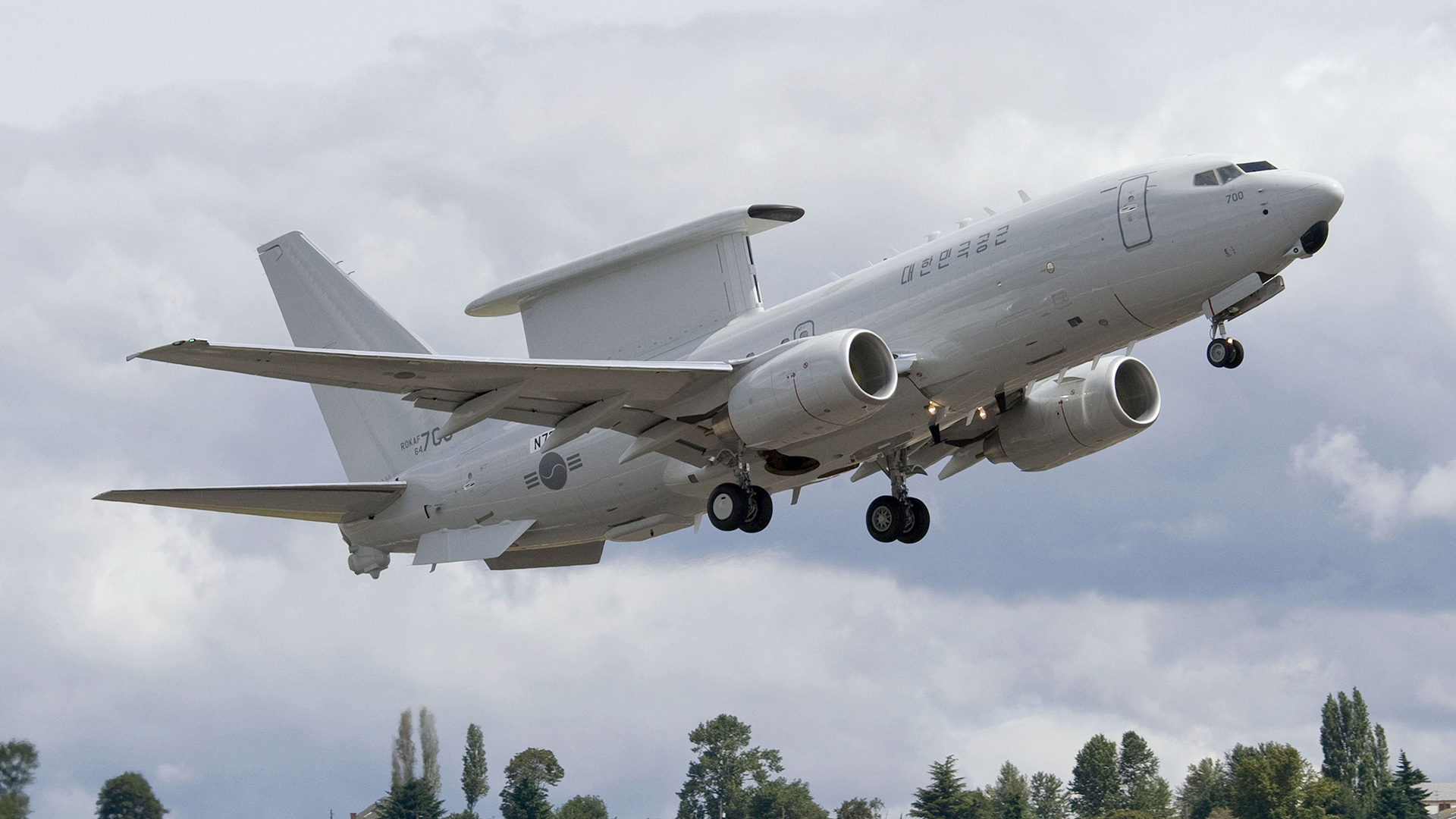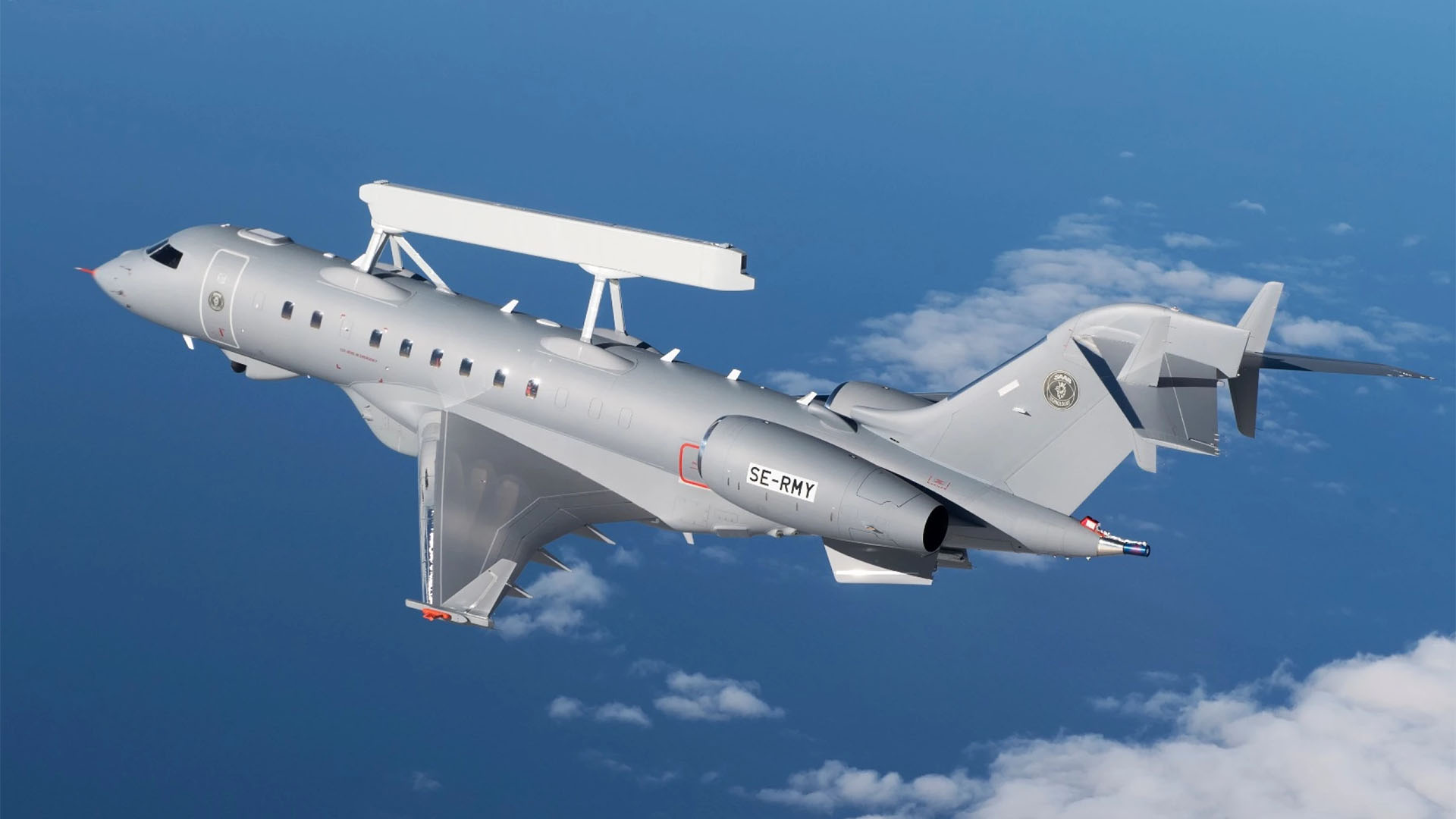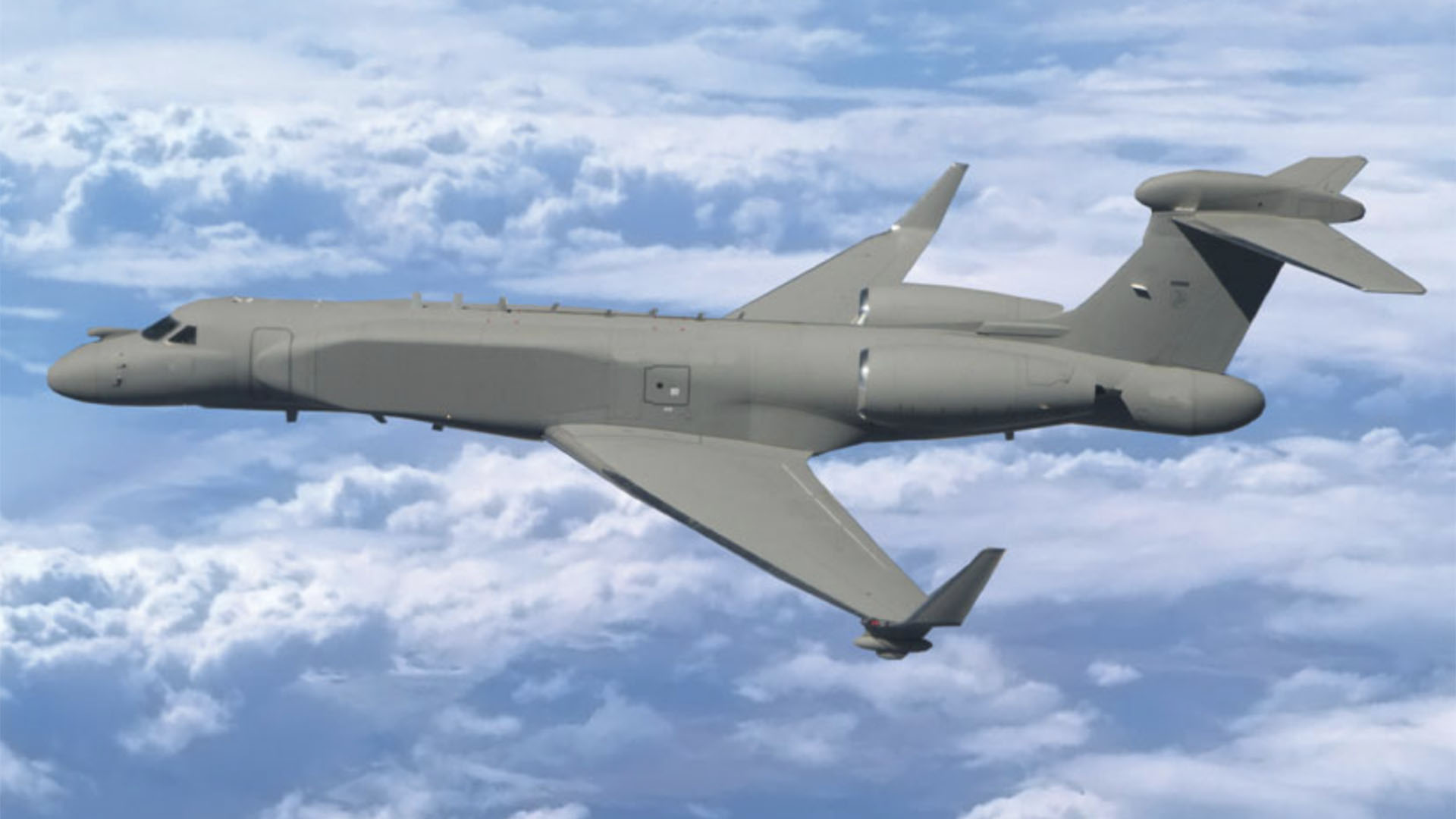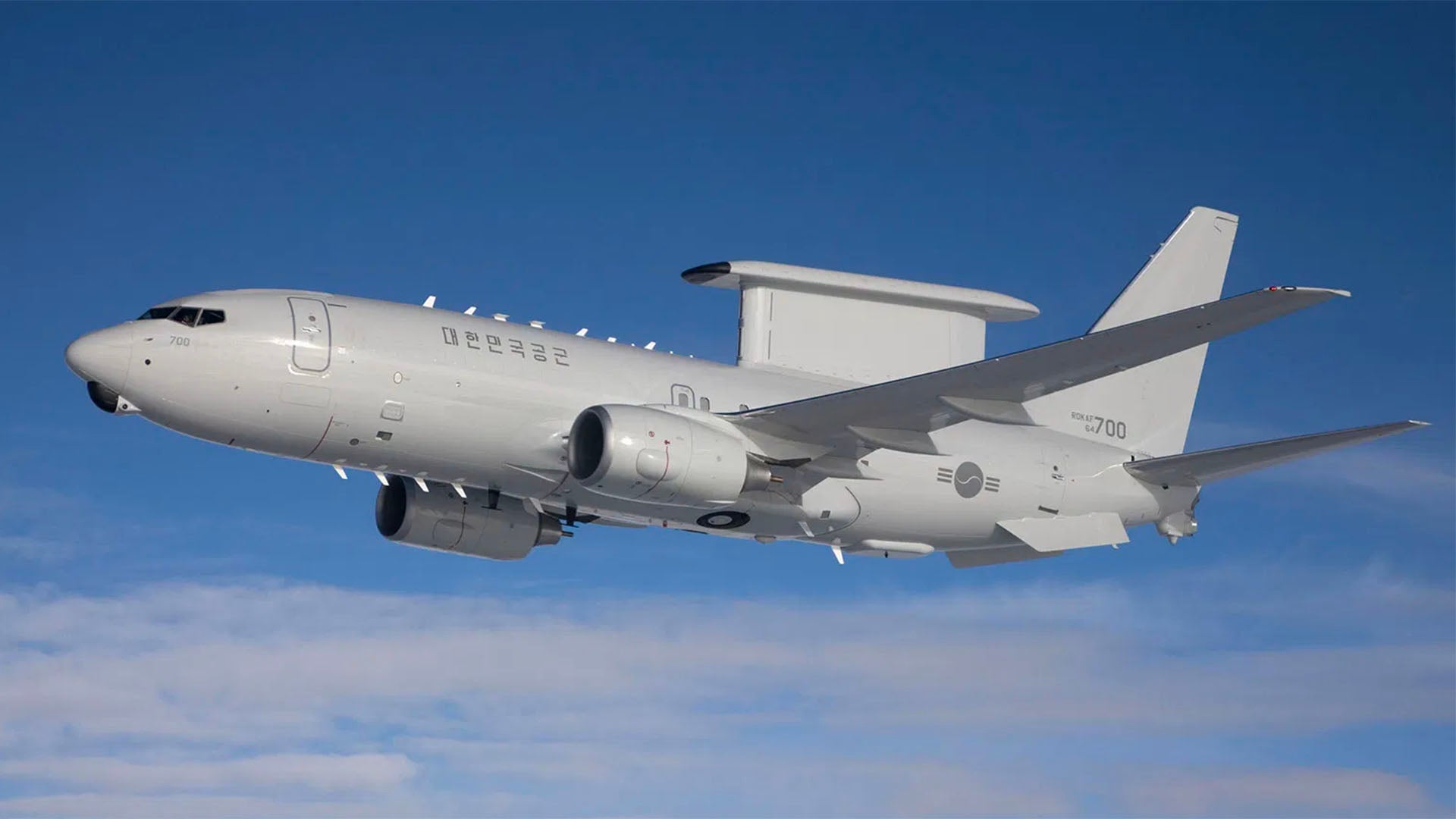The South Korean Air Force has formally kick-started a long-expected search for a new airborne early warning and control aircraft. It’s part of an overarching effort to dramatically enhance the country’s intelligence, surveillance, targeting, and reconnaissance capabilities. Seoul is especially concerned over gaps in its aerial surveillance coverage amid increasing security threats from neighboring countries that threaten its Korean Air Defense Identification Zone.
The Defense Project Promotion Committee approved the airborne early warning and control (AEW&C) acquisition plan on June 26, 2020, for an undisclosed number of new aircraft, as well as for a partnering signals intelligence (SIGINT) capability. A statement from South Korea’s Defense Acquisition Program Administration (DAPA) indicated that a domestic solution had been discounted and that a direct acquisition would be made by 2027 under a project dubbed AEW&C II, with an attached $1.32 billion-budget that will kick-in next year.
South Korea first identified an emerging airborne early warning requirement as long ago as 1980, which it deemed necessary due to the country’s topography. This limits the performance of ground-based radar stations. It took until 2005 for the country to launch E-X, which put the Boeing 737 AEW&C aircraft up against a U.S.-Israeli consortium of Gulfstream, L-3 and Israel Aircraft Industries/Elta offering the Gulfstream G550 Conformal AEW (CAEW).
Despite the attraction of low acquisition and through-life costs, South Korea was unable to proceed with the G550 due to export restrictions and the Boeing 737-based offer was selected by default in August 2006. The resulting $1.6-billion Peace Eye project included four aircraft that recieved the local designation E-737. The first of these was constructed and missionized by Boeing in Seattle, Washington, with Korean Aerospace Industries (KAI) carrying out equipment installations on the remaining three examples in Saechon, South Korea. Deliveries were completed on Oct. 24, 2012.

While many reports on the new AEW&C requirement have suggested that Seoul will simply order two more E-737s, there have been a number of domestic reports detailing disappointment with the Boeing aircraft. In October 2019, the South Korean daily newspaper MunhwaIlbo reported on a South Korean Air Force document that had been submitted to the Korean parliamentary National Defense Committee. It cited “frequent failures” in the period from 2015 to September 2019 that meant the E-737s had failed to meet a targeted availability rate of 75%. This lack of airframes reportedly exposed gaps in South Korea’s air defense coverage network due to aircraft being unavailable to maintain constant patrols. This is of particular concern because the E-737 is considered to be one of South Korea’s primary indigenous means of monitoring North Korean missile activity. The aircraft is also key for detecting low-flying targets and those will small radar signatures, which are a big threat to South Korea.
With the announcement of a budget and a timeline, AEW&C II is now very much a live program. Korea will next decide whether to go with a straight Foreign Military Sale (FMS) deal for two more Peace Eye E-737s or launch a competitive tender.
The Royal Australian Air Force also operates six 737 AEW&Cs, known locally as E-7A Wedgetails, the deliveries of which were completed on May 2, 2012, after a succession of delays mainly related to mission system integration. It is already heavily-invested in significant upgrades for its E-7s under Project AIR 5077 5A, which will, amongst other things, improve the type’s combat identification capabilities, add new data links, plus new wide-band satellite communications. Seoul has not taken up Boeing’s offers of a similar upgrade for its aircraft, despite them being broadly similar to the Wedgetails in overall configuration, except for a local electronic support measures (ESM) suite.

In addition, despite positive operational reports, and the comprehensive upgrade project, Australia’s 2020 Defence Strategic Update and Force Structure Plan, released on July 1, revealed a rather surprising statement regarding the Wedgetails:
“To protect the joint force, the Government will continue to invest in support and upgrades for the E-7A Wedgetail airborne early warning and control aircraft, as well as the development and support of a joint air battle management system to better coordinate and synchronise ADF operations. In addition, plans for the E-7A replacement will now involve increasing the fleet to provide greater coverage of the highly-complex future air and joint-battlefield environment that will include a proliferation of autonomous systems and long-range and high-speed weapons.”
Australia’s E-7A Wedgetail Replacement was an unexpected inclusion, particularly so soon after upgrade of the existing platform. However, finding a replacement will not be a quick process. It may look at what options are available to realize its ambition to afford an expanded fleet of platforms. This could also potentially involve an aim for greater range from its AEW&C aircraft to hold potential adversaries at risk from a greater distance. However, it makes stark reading for the United Kingdom, which has recently started down the path of replacing the Royal Air Force’s fleet of E-3D Sentry Airborne Warning And Control System (AWACS) aircraft with five new Wedgetails under an almost $2-billion deal with Boeing. The contract was announced on Mar. 22, 2019, with an aggressive timeline for delivery, with the first aircraft arriving in 2023. The United Kingdom heralded the decision as involving a significant partnership with Australia.
Boeing has to date secured four customers for the 737 AEW&C, Australia, Korea, Turkey, and the United Kingdom. The design has, significantly, received little public interest domestically from the U.S. Air Force. Signs of mission readiness shortfalls in Korea coupled with Australia’s announcement that it might replace its Wedgetails have inevitably turned attention towards other AEW&C candidate platforms that could compete to upset the Boeing platform’s success in the region.

Saab is offering its GlobalEye Swing Role Surveillance System (SRSS) to South Korea, of which the first aircraft was delivered to its launch customer the United Arab Emirates Air Force on April 29. The GlobalEye combines Saab’s Erieye Extended Range (ER) radar and a range of additional advanced sensors, now offered in a missionized, long-range Bombardier Global 6500 aircraft in place of the original Global 6000, which is no longer manufactured. IAI is also in the mix with a derivative of its CAEW system.
Although unconfirmed, it’s widely expected that Korea will purchase two additional AEW&C aircraft to complement the existing Peace Eyes to improve its border coverage. Seoul was unable to participate in extensive integration work on its initial E-737s and Saab is likely to be dangling the carrot of substantial incentives to domestic industry through the transfer of technology and integration work, which is seen as a key differentiator over a straight FMS deal for more E-737s. Saab says the GlobalEye would be able to neatly operate alongside the Peace Eyes, with the Erieye’s S-Band gallium-nitride radar complementing the E-737’s L-Band radar.

Importantly, the 737 AEW&C is not an active production program, and Boeing would need to source airframes and select an integrator for the mission systems if Korea opted for additional E-737s. In comparison, the RAF is buying at least two secondhand commercial airliners for its Wedgetail program. Marshall Aerospace, which was to have acted as the systems integrator, withdrew from the project in March due to “commercial considerations.” Boeing subsequently announced that STS Aviation Services was to assume the conversion work when the first airframes arrive later this year.
In the meantime, Korea is examining its options on whether to stick with the E-737 or launch a formal competition. The latter would bring Saab and IAI Into the frame for a fascinating shoot-out for a prized competition in a market that could have huge implications for others looking at airborne early warning options.
Contact the author: Jamie@thedrive.com
